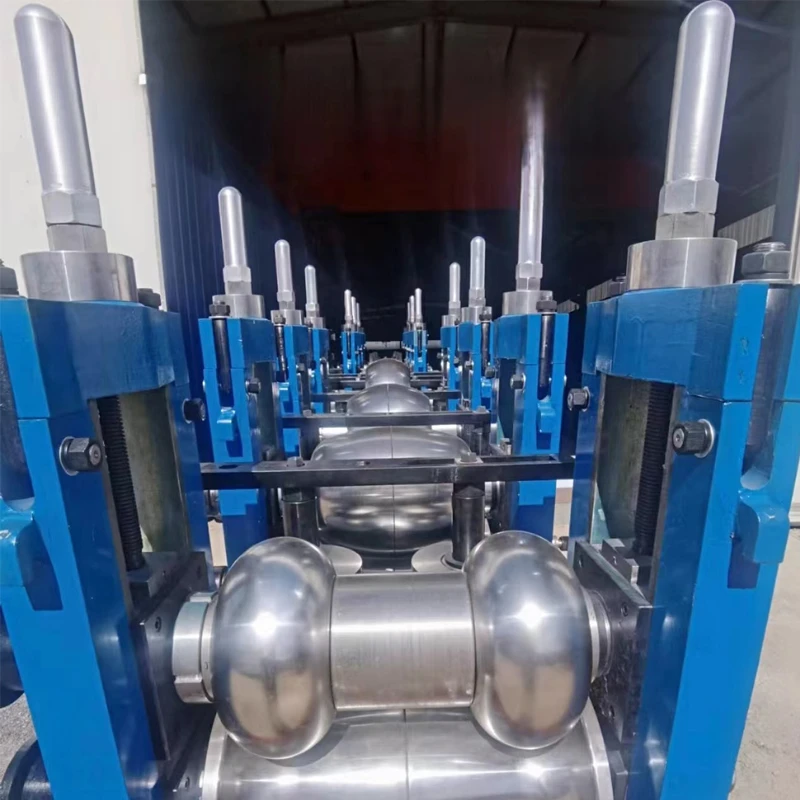Conduit and Pipe Production Equipment for Efficient Manufacturing Solutions
Conduit Pipe Manufacturing Machines A Comprehensive Overview
The demand for conduit pipes has surged in recent years due to increased construction activities and the expansion of electrical infrastructure globally. As a result, the manufacturing of conduit pipes has transformed into a sophisticated process that relies heavily on advanced machinery. This article delves into the key components, processes, and future trends associated with conduit pipe manufacturing machines.
Understanding Conduit Pipes
Conduit pipes are essential components in the electrical and telecommunications industries, used to protect and route electrical wiring and fiber optic cables. They are typically made from materials such as PVC, steel, or aluminum, each offering distinct advantages in terms of durability, flexibility, and resistance to environmental factors.
The Manufacturing Process
The manufacturing of conduit pipes involves several stages, each facilitated by specialized machinery. The primary processes include extrusion, shaping, and finishing.
1. Extrusion The extrusion process is the heart of conduit pipe production. It begins with raw plastic material, often in the form of pellets, which are fed into an extruder. The extruder heats the pellets to a molten state and forces them through a die, shaping the material into a hollow tube. The control of temperature and pressure during this phase is critical, as it ensures the uniformity and quality of the pipe.
2. Cooling and Cutting Once the conduit pipe emerges from the extruder, it undergoes a cooling process, typically using a water bath or air cooling system. This step solidifies the pipe and prepares it for cutting. Cutting machines precisely slice the long extruded lengths into desired sizes, ensuring minimal waste and consistent dimensions.
3. Shaping For conduit pipes that require bends, fittings, or special shapes, additional shaping machinery comes into play. This equipment utilizes heat and pressure to manipulate the pipes into the desired configuration without compromising their structural integrity. Advanced CNC (Computer Numerical Control) machines enhance precision and allow for customization of pipe shapes according to specific project requirements.
4. Finishing The finishing stage involves adding any necessary coatings or treatments. For instance, pipes may be painted or receive a protective coating to enhance resistance to corrosion. Quality control measures, such as testing for strength and flexibility, are undertaken to ensure that the finished product meets industry standards.
conduit pipe manufacturing machine

Key Machinery in Conduit Pipe Manufacturing
The efficiency and effectiveness of the conduit pipe manufacturing process heavily depend on the machinery used. Some of the critical machines include
- Extruders These are tailored to handle various materials like PVC, HDPE, or metal, each requiring different heating and pressure setups. - Cooling Systems Vital for maintaining the integrity of the extruded pipe, cooling systems can be water or air-based, depending on the material. - Cutting Machines Precision cutters ensure that the pipes are of uniform length and reduce material waste. - Bending Machines Essential for producing conduit pipes with specific angles and shapes. - Quality Control Equipment This includes tensile testers and thickness gauges to check the integrity and quality of the pipes.
Future Trends in Conduit Pipe Manufacturing
The conduit pipe manufacturing industry is undergoing significant changes driven by technological advancements and shifts in market demand. Key trends include
- Automation The incorporation of automation and robotics into the manufacturing process is improving efficiency and reducing labor costs. Automated systems can monitor production lines in real-time, adjusting parameters to ensure quality control.
- Sustainability As environmental consciousness grows, manufacturers are increasingly using recycled materials and developing eco-friendly alternatives to traditional materials. The push for sustainable manufacturing processes is reshaping the industry landscape.
- Smart Manufacturing The rise of the Internet of Things (IoT) in manufacturing allows for better monitoring and predictive maintenance of machines. This connectivity can lead to reduced downtime and improved efficiency in production processes.
Conclusion
Conduit pipe manufacturing machines play a pivotal role in meeting the growing demands of the electrical and telecommunications industries. With continuous advancements in technology and a focus on sustainability, the future of conduit pipe manufacturing looks promising. As companies adapt to these changes, they will not only enhance their operational efficiency but also contribute to a more sustainable manufacturing ecosystem.
-
High Frequency Straight Seam Welded Pipe Production Line-BzZhou Xinghua Machinery Equipment Manufacturing Co., LTD.|Precision Welding, High EfficiencyNewsJul.30,2025
-
High Frequency Straight Seam Welded Pipe Production Line|BzZhou Xinghua|Precision Welding&EfficiencyNewsJul.30,2025
-
High Frequency Straight Seam Welded Pipe Production Line - BzZhou Xinghua|Precision Engineering&EfficiencyNewsJul.30,2025
-
High-Frequency Straight Seam Welded Pipe Production Line-BzZhou Xinghua Machinery Equipment Manufacturing Co., LTD.NewsJul.30,2025
-
High-Frequency Straight Seam Welded Pipe Production Line-BzZhou Xinghua Machinery Equipment Manufacturing Co., LTD.|Precision Manufacturing, High EfficiencyNewsJul.30,2025
-
High Frequency Straight Seam Welded Pipe Production Line-BzZhou Xinghua Machinery Equipment Manufacturing Co., LTD.|Precision Steel Pipe Manufacturing&Industrial EfficiencyNewsJul.29,2025


